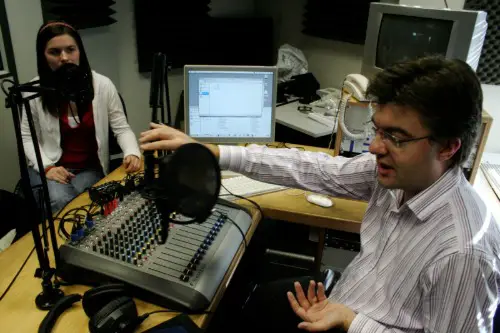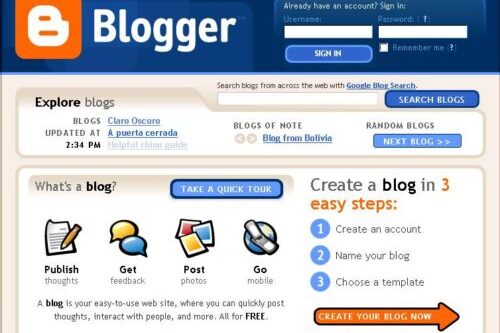1. Learning a New Language

Duolingo makes it so easy to feel like you’re about to become fluent in Spanish by summer. The streaks, the owl, the dopamine hits—it’s all designed to keep you coming back. But after a few weeks of “¿Dónde está la biblioteca?” most people fizzle out, according to Jamal Burns of The Verge. Life gets busy, grammar gets harder, and suddenly you’re ghosting your lessons.
Despite language learning apps seeing massive downloads, actual fluency rates remain low for adult learners. Studies show that motivation drops drastically without immersive practice or necessity. And unless you’re moving abroad or dating a native speaker, it’s hard to keep the momentum. So the app sits on your phone, gently judging you with its little green eyes.
2. Starting a Podcast

It always starts with, “We’re hilarious—people need to hear this.” You get a mic, make cover art, and record a few episodes. Maybe you even buy a domain and post on Instagram. For a minute, it feels like you’re on the brink of becoming the next big thing.
But then editing becomes a chore, life interferes, and listener numbers plateau at 27. According to industry reports, the vast majority of podcasts don’t make it past episode 3. What felt fresh becomes a scheduling nightmare. The mic gathers dust, and the RSS feed quietly dies, Maxine Pollock of The Sundial Press says.
3. Growing a Vegetable Garden

It’s spring, you’ve watched a few TikToks, and you’re suddenly a homesteader. Raised beds are built, heirloom seeds are planted, and you’re dreaming of vine-ripened tomatoes. At first, it’s all watering cans and hope. Then come the weeds, the bugs, and the soul-crushing realization that zucchini takes over everything.
A significant number of first-time gardeners abandon the project after one season. Whether it’s due to pests, time constraints, or poor yields, enthusiasm wanes quickly. Gardening is rewarding but unforgiving, especially if you travel or forget to water. Eventually, the beds turn into a wild, overgrown jungle.
4. Decluttering the Entire House

You read The Life-Changing Magic of Tidying Up and suddenly everything you own is a personal affront. Armed with trash bags and ambition, you start with the sock drawer. The first few hours feel amazing—liberating, even. But by the time you hit the junk drawer or the sentimental closet, you’re emotionally drained, according to Dr. Alice Boyes of Psychology Today.
Studies show that Americans collectively spend billions on storage solutions, suggesting decluttering is often more aspirational than complete. The intention to minimize is real, but the follow-through is rare. You end up with three trash bags in the hallway that never make it out the door. Eventually, you just shove everything back and pretend it never happened.
5. Starting a Blog

You buy a catchy domain and have big plans to “build a brand.” The first post goes up—a heartfelt 800-word piece about your travels or thoughts on wellness. Then maybe a second one two weeks later. And then…radio silence.
Millions of blogs are created each year, but the majority are abandoned within months. Writing consistently is hard, and traffic is even harder to build. Without instant gratification, the project starts to feel pointless. The site renews for years before you finally remember to cancel it.
6. Training for a Marathon

You buy new running shoes and maybe even a fitness tracker. There’s a spreadsheet training plan taped to the fridge and dreams of crossing a finish line with tears in your eyes. The first few weeks of jogs are invigorating. Then the long runs start getting longer, and motivation starts slipping, according to Chandler Plante of Popsugar.
Only about 1% of the U.S. population completes a marathon each year, despite its bucket-list appeal. Injuries, time commitments, and sheer boredom sideline many aspiring runners. It turns out there’s a big difference between running for fitness and running 26.2 miles. Most people quit somewhere between shin splints and “I’ll just do it next year.”
7. Building Furniture

You watch a YouTube tutorial and think, “How hard can it be?” Suddenly you’re at Home Depot spending $300 to make a $40 nightstand. The first cuts are empowering, and the smell of sawdust feels primal. But then the measurements are off, the screws strip, and your confidence collapses faster than the shelf.
DIY furniture is a growing trend, but it often requires skills and tools most people don’t have. According to survey data, many people abandon projects halfway through and either pay someone to finish or toss it out. What starts as a crafty endeavor ends in a pile of mismatched wood. The half-built bench becomes garage decor for years.
8. Starting a YouTube Channel

There’s a moment when you realize you have something to say—or at least something to show. You film your first video, edit it painstakingly, and upload it to a grand total of 14 views. You tell yourself the algorithm just hasn’t caught on yet. Then comes the second video, and the third, and… burnout.
About 90% of YouTube channels never reach 100 subscribers. It turns out being a creator is much harder than it looks. Between scripting, editing, and promoting, it becomes a second job. Most people lose interest long before they find their niche.
9. Meal Prepping

You buy a dozen glass containers, spend a Sunday chopping vegetables, and feel like you’ve conquered adulthood. Monday’s lunch is tasty, Tuesday’s is decent, and by Wednesday, it’s a slog. By Friday, the remaining meals get quietly tossed in favor of takeout. The fridge smells like broccoli regret.
Meal prepping is one of the top resolutions for health-conscious Americans, but consistency is rare. It requires planning, repetition, and a willingness to eat the same thing for days. The fantasy of always having healthy meals ready quickly gets crushed by boredom. Eventually, the containers just hold leftovers you never touch.
10. Writing a Novel

You sign up for NaNoWriMo or finally open that Google Doc that’s been haunting you. The first few chapters pour out—characters, plot, dialogue—it’s all flowing. You tell a few friends, and maybe even design a fake cover. But halfway through, the story loses direction and your confidence dries up.
Over 80% of Americans say they want to write a book, but only a tiny fraction ever finish. Writing a novel requires discipline and solitude—two things most of us can’t sustain. The middle of a book is notoriously difficult, and without a deadline, motivation evaporates. So the draft sits in the cloud, eternally unfinished.
11. Budgeting with an App

You download Mint or YNAB and feel like a financial wizard. You categorize every transaction and make colorful pie charts. For a few weeks, you feel on top of your money in a way that’s downright euphoric. But slowly, things stop syncing, receipts pile up, and you go back to guessing.
Budgeting apps are widely adopted but rarely maintained long-term. Studies show that most users stop checking after a couple of months. It turns out tracking every dollar is a job unto itself. And when you’re stressed, logging in to face your spending feels more like punishment than productivity.
12. Taking Up a Musical Instrument

You buy a guitar or keyboard with dreams of serenading friends or going viral on TikTok. The first few lessons are rough but rewarding. You learn a chord or two, maybe even a song. Then life happens, and the instrument becomes fancy décor.
According to instrument sales data, beginners account for the majority of purchases, but few go on to play regularly. Learning music requires consistent practice and a tolerance for sounding bad—two things people quickly tire of. Without a teacher or clear goal, progress is slow and frustrating. Eventually, it’s easier to just hit play on Spotify.
13. Starting a Side Hustle

You hear a podcast about passive income and suddenly you’re setting up an Etsy store or dropshipping site. The branding is fun, the possibilities feel endless, and for a moment, you feel like a future mogul. But then sales don’t roll in, the market feels saturated, and the hustle starts to feel like a second unpaid job.
While entrepreneurship is at an all-time high, most side hustles fizzle within a year. Profit margins are often razor-thin, and scaling requires way more effort than people anticipate. The gig economy looks easy from the outside but demands constant energy and reinvention. Eventually, you just stop checking the dashboard.
14. Taking Online Courses

You enroll in a free Ivy League class or shell out for a professional development course. The first module is exciting, and you even take notes. You imagine yourself leveling up your career or finally learning philosophy. But by week two, the videos go unwatched and the login becomes a forgotten tab.
Completion rates for online courses, especially MOOCs, are infamously low—often under 10%. Without peer pressure or structure, motivation tanks quickly. The platform may send reminder emails, but they’re easy to ignore. The certificates remain unearned, and the knowledge remains mostly theoretical.


